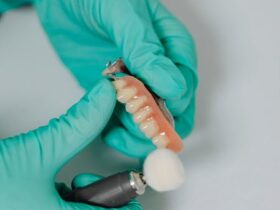Navigating the world with a wheelchair can present unique challenges, particularly for individuals with specific mobility needs. Tilt-in-space wheelchairs have emerged as a valuable tool in enhancing comfort, promoting independence, and addressing various health concerns for wheelchair users.
What is a Tilt-in-Space Wheelchair?
A tilt-in-space wheelchair offers a unique feature that allows the seat to tilt backward or forward while maintaining the seat-to-back angle. This feature provides a range of benefits, including pressure relief, improved posture, and enhanced breathing.
Understanding the Anatomy of a Tilt-in-Space Wheelchair
A tilt-in-space wheelchair comprises several key components that work together to provide optimal support and functionality. These components include:
1. Seat: The seat is the primary support surface for the user, and it should be properly sized and contoured to provide comfort and prevent pressure sores. Tilt-in-space wheelchairs often feature adjustable seat angles and depths to accommodate different user needs.
2. Backrest: The backrest provides support for the user’s back and spine, helping to maintain proper posture and reduce fatigue. Backrests in tilt-in-space wheelchairs are typically adjustable to accommodate different body shapes and provide additional support when the seat is tilted.
3. Headrest: The headrest supports the user’s head and neck, preventing strain and discomfort. Headrests in tilt-in-space wheelchairs are typically adjustable to ensure proper positioning and comfort.
4. Armrests: Armrests provide support for the user’s arms and shoulders, helping to reduce fatigue and improve posture. Armrests in tilt-in-space wheelchairs may be adjustable in height and angle to accommodate different user needs.
5. Footrests: Footrests support the user’s feet and legs, helping to maintain proper posture and prevent foot drop. Footrests in tilt-in-space wheelchairs are often adjustable in length and angle to provide personalized comfort and support.
6. Wheels: The wheels provide mobility for the wheelchair. Tilt-in-space wheelchairs may have front, rear, or both front and rear wheels, depending on the user’s needs and preferences.
7. Frame: The frame is the structural foundation of the wheelchair, providing support and stability. Tilt-in-space wheelchair frames are typically made from lightweight yet durable materials, such as aluminum or titanium.
Benefits of Tilt-in-Space Wheelchairs
1. Reduced Pressure Ulcers: Tilt-in-space wheelchairs help redistribute pressure, reducing the risk of pressure ulcers, particularly in individuals who spend extended periods seated.
2. Improved Posture and Spasticity Management: Tilting the wheelchair can help improve posture, reduce muscle tone, and manage spasticity in individuals with neurological conditions.
3. Enhanced Breathing: Tilting the wheelchair backward can open up the chest cavity, allowing for easier breathing and improving respiratory function.
4. Promoting Digestion: Tilting the wheelchair forward can aid in digestion by encouraging food movement through the digestive tract.
5. Enhanced Muscle Tone Management: For individuals with spastic muscles, tilting the seat can help to relax the muscles and reduce discomfort, improving overall mobility and function.
6. Increased Independence and Social Participation: Tilt-in-space wheelchairs provide greater comfort and support, enabling users to participate more actively in social activities and daily tasks.
Considerations for Tilt-in-Space Wheelchairs
1. Individual Needs Assessment: A thorough assessment of the individual’s needs and preferences is crucial to determine the most suitable tilt-in-space wheelchair features and design.
2. Weight Capacity: Tilt-in-space wheelchairs come with varying weight capacities, so it’s essential to consider the user’s current and anticipated weight.
3. Portability and Transportation: For individuals who require frequent transport, a foldable tilt-in-space wheelchair offers convenience and portability.
4. Accessories and Customization: Tilt-in-space wheelchairs can be customized with various accessories, such as headrests, backrests, harnesses, and cushions, to enhance comfort and support.
5. Seat Options and Positioning: Consider the type of seat cushion, backrest, and headrest that will provide the most comfort and support for the user. Adjustable positioning features can further enhance comfort and accommodate changing needs.
6. Power or Manual Drive: Tilt-in-space wheelchairs are available in both power and manual drive options. Power wheelchairs offer greater mobility and independence, while manual wheelchairs may be preferred for individuals who want to maintain physical activity.
Types of Tilt-in-Space Wheelchairs
1. Manual Tilt-in-Space Wheelchairs: These wheelchairs require manual operation to tilt the seat.
2. Power Tilt-in-Space Wheelchairs: These wheelchairs feature an electric motor that automatically tilts the seat.
Features of Tilt-in-Space Wheelchairs
Tilt-in-space wheelchairs come with a range of features that enhance their functionality and adaptability:
1. Seat Tilt Angle Adjustment: The seat tilt angle can be adjusted to various positions, allowing for personalized comfort and support.
2. Reclining Backrest: A reclining backrest provides additional comfort and support for resting or sleeping while seated.
3. Adjustable Armrests and Footrests: Adjustable armrests and footrests enhance positioning and comfort, ensuring proper body alignment and reducing fatigue.
4. Wheelchair Cushions: Various wheelchair cushions are available to provide pressure relief and support, preventing pressure sores and promoting comfort.
5. Additional Accessories: Additional accessories, such as headrests, harnesses, and tray tables, can further customize the wheelchair to meet the individual’s needs.
Leading Tilt-in-Space Wheelchair Brands
1. Ottobock: A global leader in wheelchair technology, offering a wide range of tilt-in-space wheelchairs.
2. Tilite: Renowned for its lightweight and customizable tilt-in-space wheelchairs.
3. Sunrise Medical: A diversified mobility solutions provider, including tilt-in-space wheelchairs.
Conclusion
Tilt-in-space wheelchairs have revolutionized mobility solutions for individuals with specific needs. By providing enhanced comfort, promoting independence, and addressing various health concerns, these wheelchairs play a significant role in improving the quality of life for wheelchair users. Consulting with a healthcare professional or mobility specialist can help determine if a tilt-in-space wheelchair is the right choice for you or your loved one.







Leave a Reply